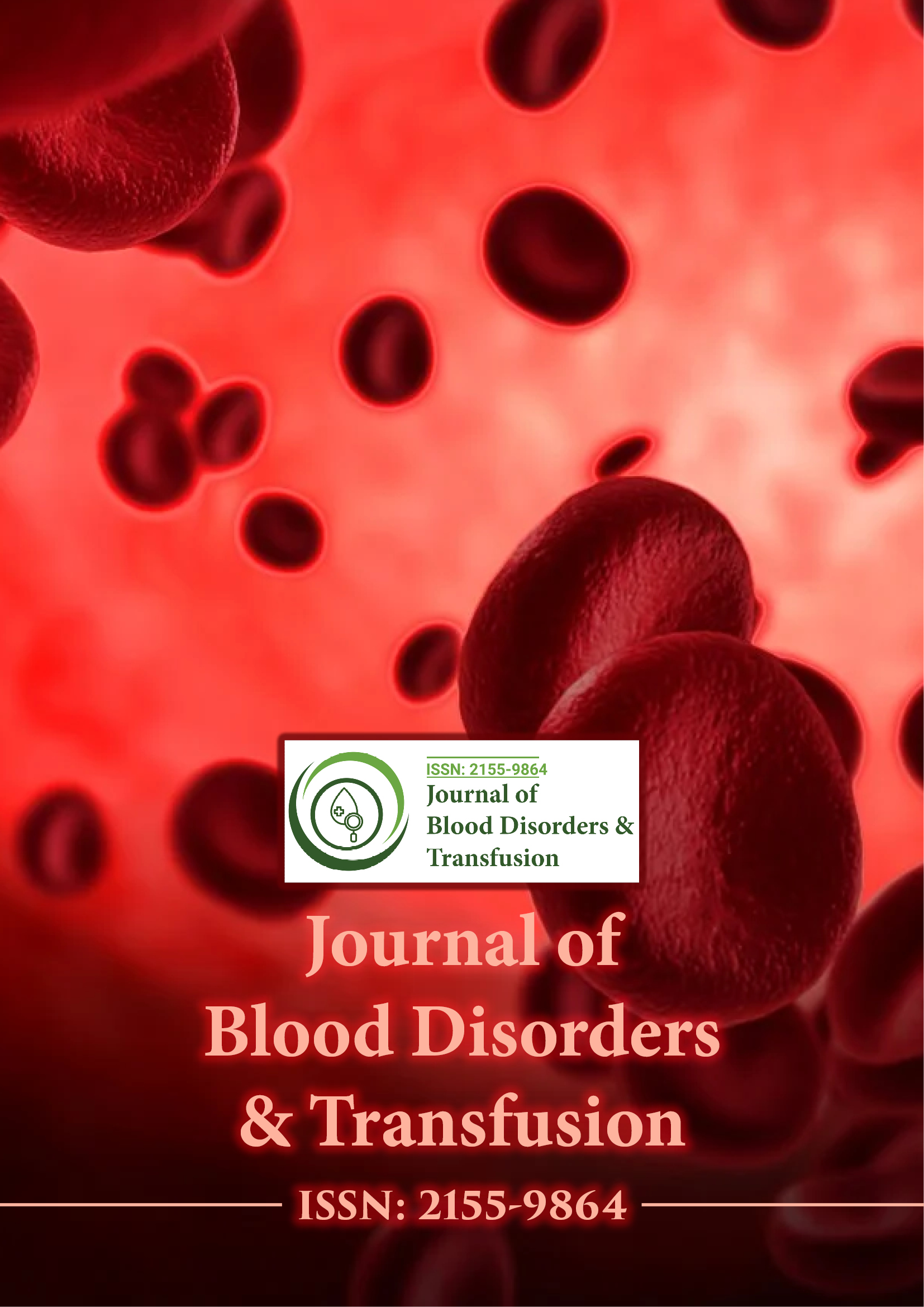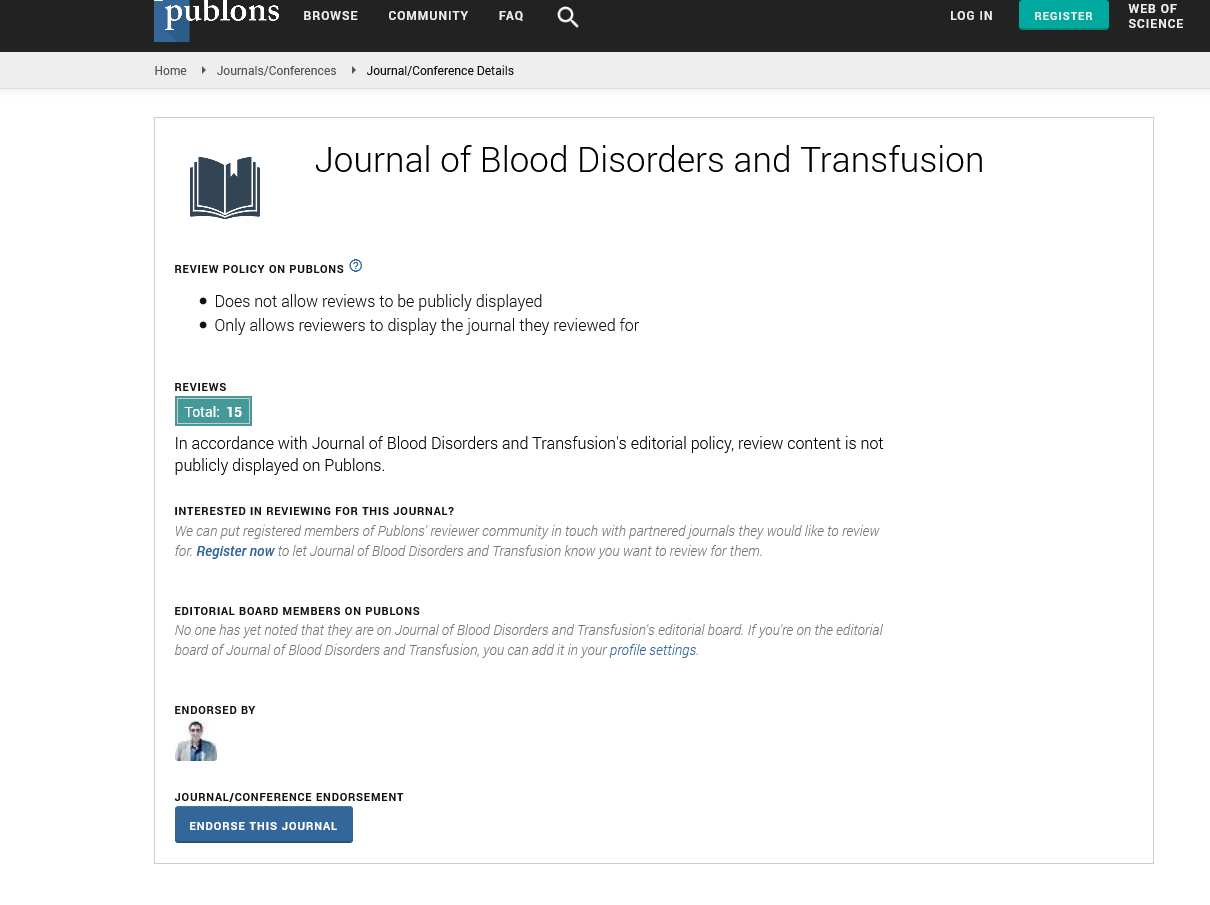Indexed In
- Open J Gate
- Genamics JournalSeek
- JournalTOCs
- Ulrich's Periodicals Directory
- RefSeek
- Hamdard University
- EBSCO A-Z
- OCLC- WorldCat
- Proquest Summons
- Publons
- Geneva Foundation for Medical Education and Research
- Euro Pub
- Google Scholar
Useful Links
Share This Page
Journal Flyer

Open Access Journals
- Agri and Aquaculture
- Biochemistry
- Bioinformatics & Systems Biology
- Business & Management
- Chemistry
- Clinical Sciences
- Engineering
- Food & Nutrition
- General Science
- Genetics & Molecular Biology
- Immunology & Microbiology
- Medical Sciences
- Neuroscience & Psychology
- Nursing & Health Care
- Pharmaceutical Sciences
Journal Highlights
- Anemia Studies
- Antiphospholide Antibody Syndrome
- Autoimmune Disorder
- Autoimmune Haemolytic Anaemia
- Blood Banking
- Blood Cancer
- Blood Group
- Blood Lymphocytes
- Blood Transfusion Techniques
- Coagulation
- Eosinophilia
- Genetic Blood Disorders
- Haemolytic Anaemia
- Haemolytic Disease of the Newborn
- Haemostasis
- Hemato-oncology
- Hematology
- Innovative Treatments of Blood
- Juvenile Myelomonocytic Leukaemia
- Leukopenia
- Lymphocytosis
- Neutropenia
- Neutrophilic Leukocytosis
- Pediatric hematology
- Plasma
- Plasma Cell Disorder
- Platelet disorders
- Red Blood Cells
- Sickle Cell Disease
- Systematic Lupus Erythematous
- Thrombocytopenia Purpura
- Transfusion Medicine
- White Blood Cell
Blood Banking
Blood banking is essential in healthcare, involving the collection, testing, processing, and storage of blood and its components for transfusion and therapy. It begins with recruiting and screening donors to ensure safe blood. The collected blood is tested for diseases and typed, then separated into components—red blood cells, plasma, platelets, and cryoprecipitate—each used to treat different conditions.
Red blood cells help anemia patients, plasma aids clotting disorders, platelets support chemotherapy patients, and cryoprecipitate treats hemophilia. Proper storage is crucial: red blood cells at 4°C for up to 42 days, platelets at room temperature for up to 5 days, and plasma frozen for up to a year.
Effective inventory management ensures blood availability, especially in emergencies. Advances in blood banking improve safety and efficiency, making it indispensable in emergency medicine and various treatments.

